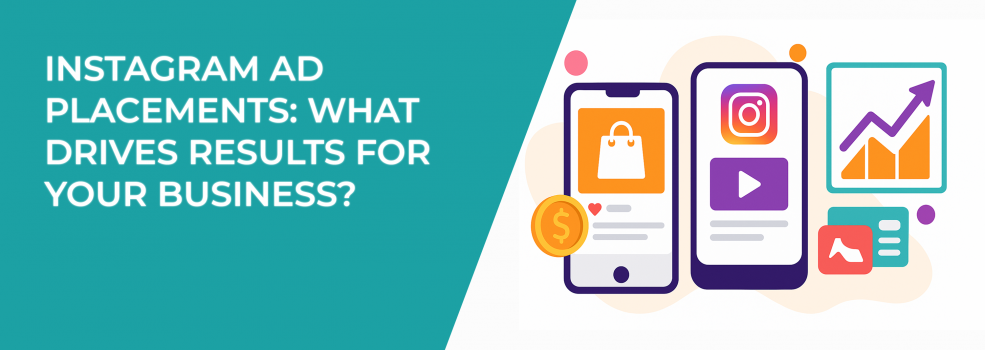Instagram isn't just a social platform anymore — it’s a full-scale advertising engine. But success on Instagram doesn’t depend solely on great visuals or clever copy. Where your ad appears on the platform plays a major role in whether it performs.
Placements like Feed, Stories, Reels, and Explore each serve different user behaviors. Some generate clicks. Others spark awareness. The trick? Knowing which placements align with your specific marketing goals — and using each one strategically.
Let’s break down what makes each Instagram ad placement work and how you can get more out of every campaign.
Why Instagram Ad Placements Matter
Most advertisers choose “Automatic Placements” because it’s fast and easy. Meta’s system distributes ads across Instagram and Facebook based on where it thinks you’ll get results.
But here’s the catch: not all placements drive the same type of results. An ad that performs well in Instagram Stories may underperform in the Explore tab. Reels might generate massive reach, but weak conversions.
To improve ad performance, advertisers should:
-
Understand the context and user behavior behind each placement.
-
Customize creative assets for each format.
-
Track performance by placement — not just campaign-level.
Getting specific with your placements can reduce wasted spend, improve engagement, and increase return on ad spend (ROAS).
Before fine-tuning placements, make sure your targeting is solid — this Facebook Ad Targeting 101 guide covers how to reach the right audience with precision.
Instagram Feed Ads: Built for Engagement and Detail
The Instagram Feed remains a core placement for a reason. It gives users time to absorb information and engage more deeply. People scroll slower here, making it ideal for detailed product visuals, lifestyle shots, and carousels.
What works well in the Feed:
-
Carousel ads to showcase multiple products, steps, or features;
-
Captions that are short but purposeful, with a clear CTA;
-
High-resolution photos or videos that align with your brand aesthetic.
Tips:
-
Avoid cramming too much into one image — let visuals breathe.
-
Use square (1:1) or vertical (4:5) formats for better screen coverage.
-
Start with strong imagery; the first frame often determines if someone stops scrolling.
Feed ads offer a strong blend of visibility and intent. Ideal for product discovery, ecommerce, and retargeting.
Instagram Stories: Quick, Native, and High-Converting
Stories are full-screen, immersive, and fast-paced. They’re consumed quickly — and they expire in 24 hours — but that urgency works in your favor.
Users expect vertical, raw-looking content here. A polished TV-style ad often gets skipped. Instead, ads that feel native to Stories — casual, mobile-shot, and authentic — tend to outperform.
What to focus on:
-
Clear messaging in the first 1–2 seconds;
-
Vertical video (9:16) formatted specifically for Stories;
-
Interactive elements like polls, countdowns, or emoji sliders to boost engagement.
Tips for Story ads:
-
Keep the call-to-action visible throughout the ad.
-
Use audio — but make sure your message works without it too.
-
A/B test different first frames; it’s what hooks the viewer.
Stories are great for time-sensitive offers, lead generation, and direct conversions.
Want to go deeper into converting users through immersive vertical content? Learn how to use Instagram Stories to drive engagement and conversions.
Reels Ads: Massive Reach, Lower Purchase Intent
Reels are Instagram’s fastest-growing format — short, looping videos designed for entertainment. Ads placed here often get high reach and strong engagement, but lower click-through rates and conversion.
Why? Because users in Reels are in a discovery mindset, not a decision-making one.
Use Reels to:
-
Boost brand awareness with fun, eye-catching content;
-
Showcase products in action with short demos or UGC-style videos;
-
Test viral-style creative that doesn’t feel like an ad.
Tips:
-
Use trending sounds if applicable to your brand;
-
Keep videos under 15 seconds for higher completion rates;
-
Focus on storytelling, not selling — push for curiosity, not clicks.
Reels ads work well at the top of the funnel. Use them to warm up audiences, then retarget through Stories or Feed placements.
If you’re exploring creative ways to make Reels part of your overall growth engine, this guide to using Instagram Reels in your marketing strategy breaks down tactics that help boost engagement and visibility.
Explore Ads: Intent Meets Curiosity
Explore is where users go to find new things — content, brands, ideas. That mindset makes Explore a strong placement for reaching cold audiences who are open to discovering something relevant or useful.
Explore ads appear after users tap into a post on the Explore grid, which means they’ve already shown interest in similar content.
Why Explore ads are valuable:
-
High visibility to niche audiences;
-
Pre-qualified interest based on browsing behavior;
-
Less competition than Feed or Stories.
Optimization tips:
-
Keep visuals consistent with trending content in your category;
-
Avoid overly branded creative — blend in, but stand out with clarity;
-
Pair with interest-based targeting for stronger relevance.
Explore is often underused — but when aligned with niche targeting, it delivers high-quality engagement.
How to Choose the Right Placement
Choosing placements isn’t about using all of them. It’s about using the right ones for your goals.
Start with these questions:
-
Are you building awareness or driving conversions?
-
Is your creative format vertical, square, or horizontal?
-
Are you speaking to a cold audience or a retargeting group?
General guidelines:
-
Use Feed and Stories for sales and traffic;
-
Use Reels and Explore for awareness and engagement;
-
Avoid using the same creative across all placements — repurpose, don’t recycle.
Track performance by placement inside Ads Manager. Look at cost per result, click-through rate, and conversion metrics per surface — not just overall campaign data.
Still unsure which placements align with your objective? Start by reviewing Meta ad campaign objectives to clarify what each one is really designed to do.
Final Takeaway: Placement Strategy Drives ROI
Instagram ad placements are more than a checkbox. They shape how your audience sees your message — and whether they act on it.
The right strategy combines:
-
Custom creative for each placement;
-
Ongoing performance tracking;
-
A clear match between intent and format.
Rather than relying on default settings, take control of where your ads appear. The more intentional your placements, the more efficient your ad spend becomes.

